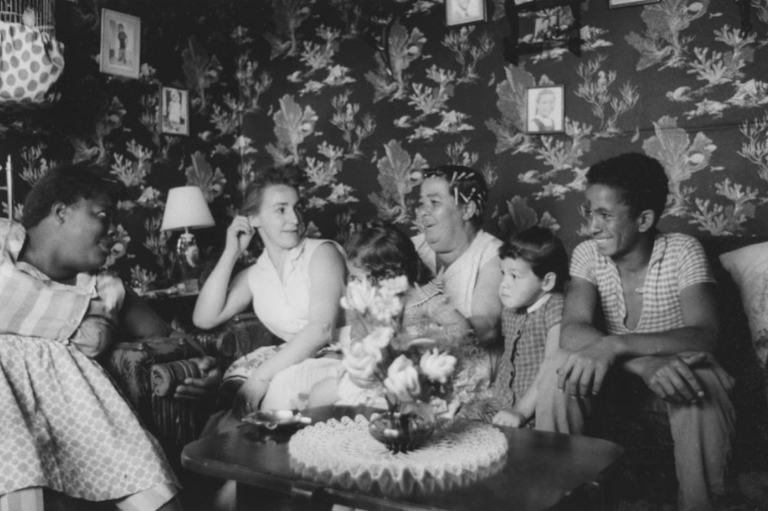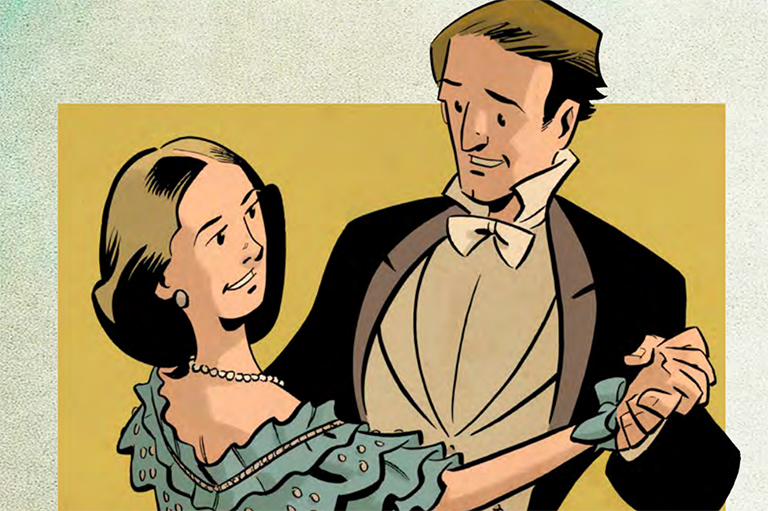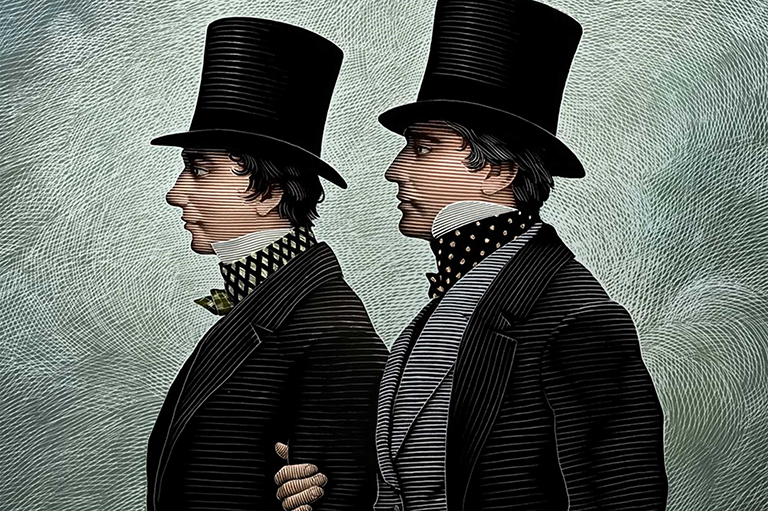Evidence and the Oka Crisis
Grade Levels: Grades 9/10, 11/12
Subject Area: Social Studies, History, Civics
Lesson Overview
In this lesson, students are introduced to the historical thinking concepts of Primary Source Evidence and the Ethical Dimensions through the events of the Oka Crisis of 1990. Students investigate a variety of primary source documents related to the crisis, and take civic action based on their investigations by designing a memorial or writing a letter.
Time Required
This lesson is designed to take 2-3 days, but can be shorter or longer, depending on the number of primary sources you choose to examine.
Historical Thinking Concept(s)
- Use primary source evidence
- Understand the ethical dimension of historical interpretations
Learning Outcomes
Student will:
- Summarize and describe a variety of primary source documents from the 1990 Oka Crisis
- Compare, contextualize and corroborate primary source evidence
- Assess which questions are most valuable, and support choices with evidence and reasoning
- Select and defend an ethical stance on the Oka Crisis
- Create, write or propose a civic action in response to the Oka Crisis
Background Information
The Oka Crisis was a land dispute between the Mohawk (Haudenosaunee) of Kanesatake and the town of Oka, Quebec. While the “crisis” or standoff officially began July 11, 1990 and ended September 26, 1990, the dispute began much earlier and land use continues to be a contentious issue in the area. The town wanted to expand a golf course and residential development onto land used by the Mohawk for a cemetery, and which they had claimed most recently in 1986. It was a violent conflict, at first involving the Sureté de Québec (provincial police) and then, when the Mohawk set up barricades to protect the land from development, the Canadian army came in. One police officer died and one Mohawk elder died after suffering a heart attack behind the barricades. The event was widely publicized in the media, and is arguably a turning point in relations between First Nations and the Canadian government, creating awareness of land claims issues, systemic racism and leading to the establishment of the Royal Commission on Aboriginal Peoples.
Preview all materials associated with this lesson before showing to students. This is a violent conflict in recent history, and may trigger some students. Be aware that this is a sensitive topic, and be prepared to refer students for additional support if necessary.
This lesson can be used on its own, or as part of a course introductory overview of the historical thinking concepts through selected 20th century events in Canadian history.
The Lesson Activity
Activating: How will students be prepared for learning?
- Ask students to write down everything they did in the last 24 hours – give them 10-15 minutes to write as much as they can remember.
- Instruct them to put a checkmark beside any item for which there is a trace remaining (eg. Text message not deleted, dirty dishes not cleaned, photo taken on phone or posted to social media)
- Of the items that left a trace, have students label them as:
- A – Accidental (eg. Dishes)
- P – Purposeful (eg. Homework)
- Ask them to circle the traces that are likely to be preserved for the next 20-30 years. Students generally don’t have very many of these.
- Have students discuss in their small groups these questions, and circulate to listen and ask some students/groups to share their thoughts with the class:
- How well do those final traces represent your life?
- What do they say about you?
- What might be some of the challenges historians face?
- Ask small groups to generate a series of questions to ask when you are reading a “trace” or primary source from the past. Students are not likely to come up with an extensive list, but it will be added to over the activity. At this stage, it’s important to have some questions in these three categories. If appropriate, teachers can provide the vocabulary words contextualize and corroborate, depending on the language level of the students.
- Sourcing - E.g. Who made it? Why was it created?
- Contextualizing – E.g. What was going on at the time?
- Corroboration – E.g. Does this source confirm, or contradict what I already know?
- Record students’ primary source questions on chart paper and post in the room. They will need to see this this list throughout the activity, and you should add to it as students figure out more primary source questions.
Acquiring: What strategies facilitate learning for groups and individuals?
- Show students the Oka Standoff Photo from September 1, 1990. Ask: What questions do you have about this picture? Have small groups discuss and share. This photo usually generates many questions! Remind students to use the questions just posted in the room, and use the caption to help.
- Read together a brief summary of the Oka Crisis (from this lesson or another reputable source). This is to give students a basic context and to respond to some of their predictions and questions from the image.
- Assign small groups to examine one of the primary source documents. Instruct them to use the questions that they just developed to examine the source.
- Then jigsaw the groups so that each student from the expert group is sharing their questions and answers with a new group of students.
- Journal Entry – Have students reflect in a journal, or on an exit card in response to this question:
- Which are the two most important questions to ask when examining a primary source document? Explain why.
Applying: How will students demonstrate their understanding?
- Introduce the idea of the Ethical Dimension of history. Ask students to consider the following questions:
- What do we owe the people of the past?
- Are we obligated to right injustices of the past?
- Are we obligated to memorialize soldiers? Does this glorify war?
- What does it mean if we say yes, we are obligated, or no, we are not obligated?
- Who decides what history is considered important?
- What’s your responsibility to the past?
- What actions can you take as a citizen? What actions will you take?
- What actions could you take as the Prime Minister?
- Four Corners activity: Ask “What should we do today about the Oka crisis?” Have students go to one of the corners of the room, where one of the following options is posted:
- Offer the Mohawk the land they are claiming, or equivalent financial compensation.
- Establish a memorial or memorial day.
- Provide education programs on the issues of land rights and to counter stereotypes of indigenous people.
- Recognize the conflict, but offer no concrete response.
Instruct students to discuss their choice with the other students at that corner, and to delegate a spokesperson who will explain why they chose that option, using the primary source evidence. Optional: Students may write a journal reflection explaining their choice
- Consolidation: Students will take a civic action in response to the Oka Crisis. They can choose one of the following options:
- Write a letter to the Canadian government (or the provincial government) explaining your views on the Oka crisis, and outline a plan for how we can improve our relationship with indigenous communities.
- Design an appropriate memorial to commemorate the Oka Crisis.
In either case, students should demonstrate an understanding of the primary source evidence that was examined, and some understanding of our ethical obligations from past events.
Materials/Resources
Primary Source Evidence and Oka Slides by Rachel Collishaw
Document 1 - Mohawks Protest Golf Course Plans at Oka, CBC News Clip April 1, 1989
Document 2 - Tension Mounts at Oka roadblock - CBC News Clip July 11, 1990
Document 3 - Canadian Army Intervenes at Oka, CBC news clip September 1, 1990
Documents 4, 5, 6 – Debbie Etienne, Globe and Mail, Major MacDonald (excerpts)
Peer Review checklists – for Primary Source Evidence and Ethical Dimension
References
The Historical Thinking Project – Primary Source Evidence Template, Understand Ethical Dimensions of History Template
The Big Six (Nelson, 2013) – I Left a Trace Activity (p. 58-63) Guideposts to Historical Thinking (p. 10-11),
Prohibition to Oka (Collishaw, 2013) – links to all resources and the unit context
“The Day of the Battle - July 11, 1990” by Debbie Etienne, from MacLaine, C., Baxendale, M. S., & Galbraith, R. (1990). This land is our land: the Mohawk revolt at Oka. Montréal: Optimum.
York, Geoffrey. “Natives Denounce Ottawa for Failing to Defuse Oka: 400 march on Parliament demanding federal intervention.” The Globe and Mail, Wednesday, July 18, 1990 p. A4
“Doing our Job” by Major John Paul MacDonald, from MacLaine, C., Baxendale, M. S., & Galbraith, R. (1990). This land is our land: the Mohawk revolt at Oka. Montréal: Optimum.
Extension Activity
If there is time, have students view the feature film, Khanesetake: 270 Years of Resistance by Alanis Obomsawain. It is a unique documentary that was filmed from behind the barricades, and has a distinctly different perspective from the news clips and articles. It is a primary source itself.
Assessment
In this lesson, there are several opportunities for assessment.
Assessment FOR learning (formative) – This is an opportunity for teachers to see if students are understanding the content, and making meaningful connections to their own lives. Anecdotal feedback to push students’ critical thinking is appropriate here.
- Journal entry #1 – Which two questions are the most important and why?
- Look for: understanding of the difference between a primary and secondary source, understanding that primary sources must be questioned, reasoning skills
- Journal entry #2 – Four corners: What action should we take and why?
- Look for: reference to primary source evidence, reasoning skills, ethical dimension: understanding that events in the past affect us still today, and that we may have a responsibility to past events.
- Peer assessment of letter or memorial
- Use the Peer Assessment Checklist (adapted from the Guideposts to Historical Thinking in The Big Six)
Assessment OF learning (summative)
- Letter to the Canadian government OR design a memorial
- Look for: reference to primary source evidence, communication skills, understanding of some of the ethical obligations stemming from the Oka crisis to present day. Use the Peer Assessment Checklist to guide your assessment.
Themes associated with this article
Advertisement




